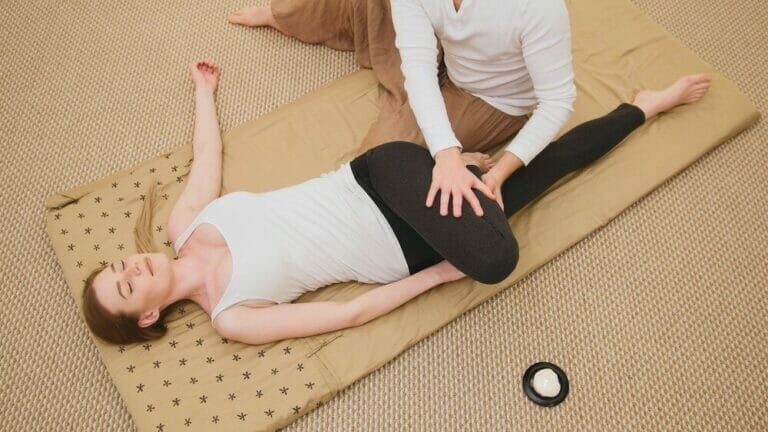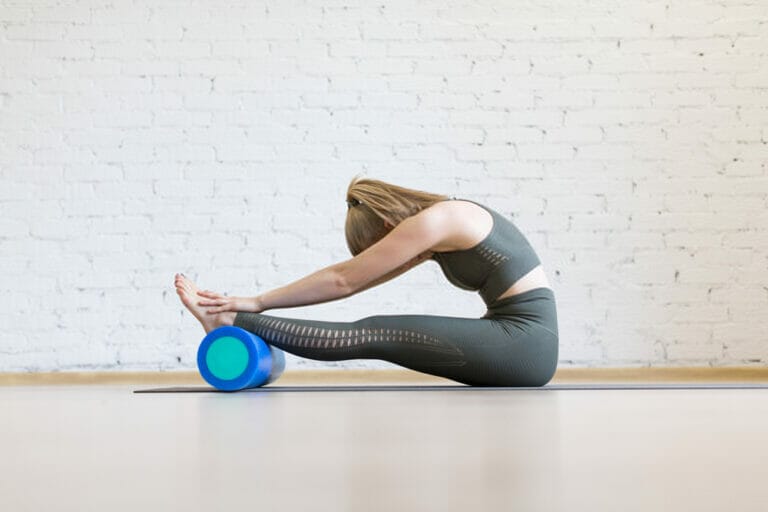How To Deflate a Yoga Ball?
A yoga ball is used in many ways, but the primary purpose is to provide support and stability during your practice.
It can be used as a prop or simply as a cushioning tool. Many people use them for their back pain or injuries. They are also great tools for stretching and strengthening the core muscles.
When using a yoga ball, the most important thing is not to bounce on it. You must keep it steady so that you do not injure yourself. If you want to know more about yoga balls, check out this article.
Yoga and Yoga Balls
The yoga ball is a thick rubber or plastic sphere filled with air. It has a globe-like shape and can be of different colours like yellow, blue, or green.

It is used for many different exercises and stretches and is beneficial for other exercises besides yoga.
You can work on your abdominal muscles, spine, and arms in almost every way possible with a yoga ball.
You can also use it to strengthen your arms, shoulders, and hammies. You can also work on your lower back and thighs.
They are perfect for beginners because they are easy to follow but still effective in strengthening the organs you need to work on. It is a tool for everyone to improve their core muscles or abdominal muscles.
Deflating a Yoga ball is easy to do. First, you have to take out the air inside of it. The process can be messy, but it is fast and easy. Let us see how to do it.
How To Deflate Yoga Balls? How To Reduce Air In Yoga Ball?
We will discuss three different ways to deflate a yoga ball:
Method 1: DIY Method To Deflate A Yoga Ball At Home
Here are the simple steps to follow to deflate a yoga ball at home:
Step 1: Make It Static And Locate The Valve
When you have a yoga ball at home, the first thing you should do is to make it static. Ensure that it is in one place before pouring out the air from inside it. Next, attach a strap or a belt to its hole to make it stable.
The hole of the yoga ball is located in the centre of its bottom side and has small straps hanging out of it.
Step 2: Work The Valve Carefully
You can do this step with the help of a screwdriver. Place the screwdriver vertically in the hole of the ball and turn it at a certain angle so that you can reach the valve on its bottom side.
Next, use your hand to pull out the valve with its little straps. After that, you can easily pull out the air inside it.
It can be tricky and time-consuming if you are not used to deflating a yoga ball before and have it all wrong. In such case, follow these steps carefully and make sure you are doing it right:
Step 3: Pull Out The Air Valve
Once you have the valve out, do not keep it in your hands. You need to teleport it to the trash can. Take both ends of the strap and hold them with your hands.
Push one end inside the ball's hole and pull it while holding on to your other hand with both hands. Slowly pull out the air valve after removing all air there.
Step 4: Apply Pressure On The Ball To Squeeze Out The Air
You need to place your knees on the ball to do this job. Use them as leverage so that you can apply a considerable amount of pressure on it.
Make sure you are over the hole and have one of your hands squeeze out the air.
Step 5: Reinsert The Valve In The Ball
Once the air is out, use the same steps again to put the valve back into the ball. Just make sure that everything is in place and you have pulled out all possible air.
Do not let any air inside it at this time; otherwise, it will become hard again, and you will have to start all over again.
Method 2: Use A Air pump To Deflate The Ball
There are some ball pumps that you can use to deflate a yoga ball. You have to plug them into an electrical outlet and pump the air out of it. Usually, they come with a hose so that you can get the air out of a ball quickly.
These pumps are available in multiple shapes and sizes, no matter what brand or shape your yoga ball is. They are very convenient alternatives to the manual method we discussed above.
Method 3: Use A Plug Remover To Release Air
The final method is an electrical device called a plug remover. It is a simple device that you can plug into the wall and release the air from a yoga ball. Follow these steps to use this method:
Step 1: Place The Plug Remover Rightly
The first thing is to plug the plug remover into a wall. You can do this by inserting one end of the wire into an electrical outlet and placing the other end in the hole of your yoga ball.
If you have trouble doing this, you can use a screwdriver to help you with it.
Step 2: Remove the Plug puller Carefully
Pull out the plug puller carefully once you have both the wire and the plugin in your hands. Make sure you do this step with caution because it can be dangerous if you pull it out too fast.
Step 3: Put Pressure To Release Air
Once you have removed the plug, you will notice that the air escapes inside the ball. Make sure that you do this with caution because the air compressor can burst with too much power.
Step 4: End
If all the air is released from the ball, remove the plug screwdriver and pull out the wires carefully. Then, you can wash it out with water and put it back in its place.
Pro Tip: How To Deflate Yoga Balls
There is no doubt that yoga balls are great tools for fitness and stretching. But, you need to make sure that you use them properly.

For example, if you leave them in your car, they can go bad very fast and even ruin the material that makes it.
So, always make sure that you deflate a yoga ball before storing it in your car or home. Also, if you want to keep it for a long time, you need to keep it in an airtight case.
Using a yoga ball pump instead of the method discussed above is also a great idea.
Conclusion:
In conclusion, deflating a yoga ball can be a challenge. There are multiple ways of doing it, but not all are the most effective.
Furthermore, as you have seen above handy guide, some methods can be dangerous for your health and may get hurt.
So, which way should you use? All we can suggest is that you invest in a pump if you need to deflate a yoga ball regularly.
These pumps make it easy to pull out the air and don't involve any risk, unlike the other methods we have discussed above.







